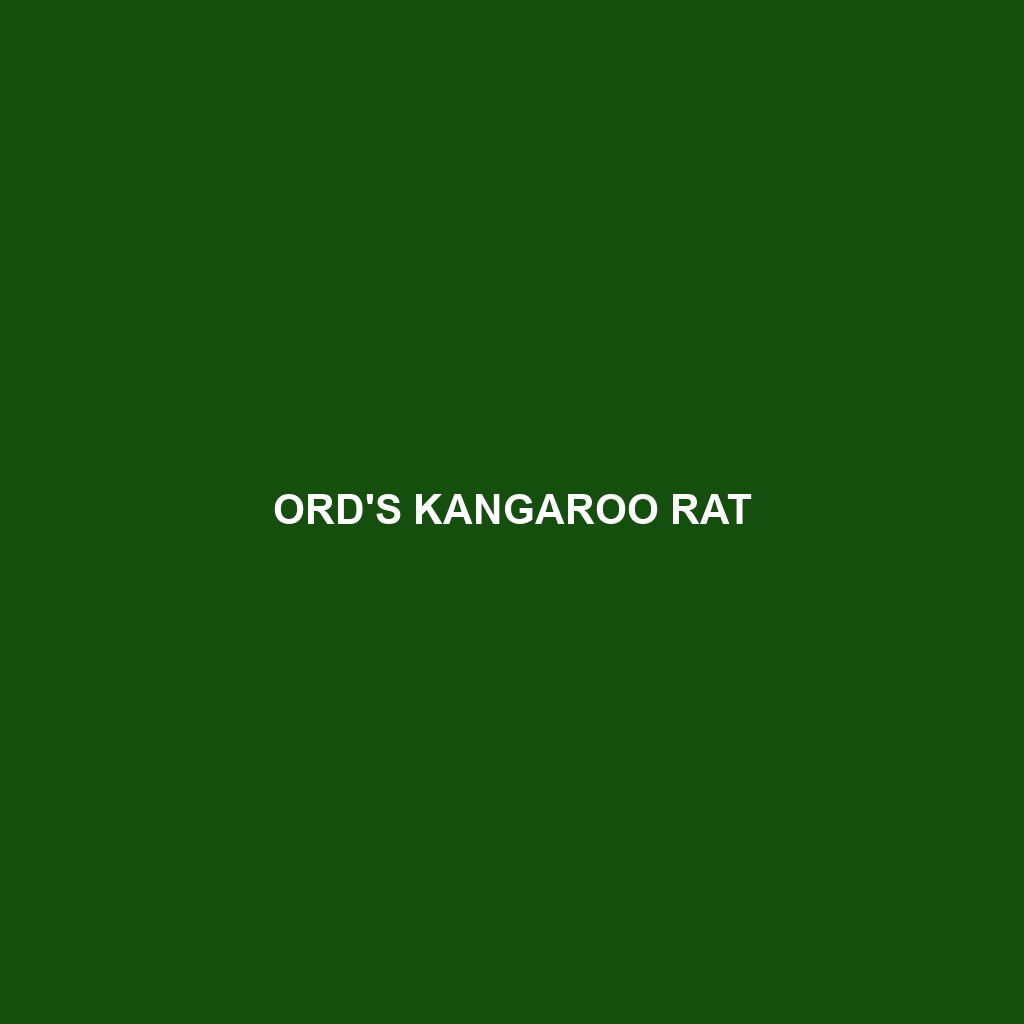Ord’s Kangaroo Rat
Common Name: Ord’s Kangaroo Rat
Scientific Name: Dipodomys ordii
Habitat:
Ord’s Kangaroo Rat, primarily found in the Great Plains of the United States, particularly in Nebraska and Kansas, thrives in arid environments. This species predominantly inhabits scrublands, grasslands, and sandy deserts, where it burrows into loose soil to escape the harsh climate and predators.
Physical Characteristics:
Ord’s Kangaroo Rat are medium-sized rodents, typically measuring about 10 to 12 inches in length, including their long, tufted tails. They display a distinct sandy-brown coloration with white underparts, facilitating camouflage in their natural habitat. Their elongated hind limbs, large eyes, and large ears are characteristic features that enhance their agility and sensory perception.
Behavior:
These rodents are nocturnal, primarily active during the night when they search for food and avoid daytime heat. Ord’s Kangaroo Rats are known for their impressive jumping ability, which helps them evade predators. They exhibit solitary behavior, marking their territory with scent and engaging in brief social interactions during mating seasons.
Diet:
Ord’s Kangaroo Rat is granivorous, primarily feeding on seeds, grains, and various plant materials. They are well adapted to desert life and can metabolize water from their food, reducing their need for drinking water. Common food sources include seeds from grasses and weeds, making them crucial for seed dispersal in their ecosystem.
Reproduction:
The breeding season for Ord’s Kangaroo Rat typically falls between late spring and early summer. Females usually give birth to two to five pups after a gestation period of about 30 days. The young are altricial, developing quickly and becoming independent within a few weeks, a testament to the adaptive strategies of this species.
Conservation Status:
Currently, Ord’s Kangaroo Rat is classified as “Least Concern” by the International Union for Conservation of Nature (IUCN). However, habitat loss and changes in land use pose potential threats that could impact their populations in the future, making ongoing monitoring essential.
Interesting Facts:
One fascinating aspect of Ord’s Kangaroo Rat is their unique ability to survive without directly drinking water. They conserve water efficiently and can thrive in extremely arid habitats. Additionally, their remarkable hopping ability can reach distances of up to 9 feet, showcasing their agility.
Role in Ecosystem:
Ord’s Kangaroo Rat plays a vital role in its ecosystem by aiding in seed dispersal, which supports plant community dynamics. As prey for various predators, including owls and snakes, they contribute to the food web balance. Their burrowing activities also improve soil aeration, benefiting plant growth in their habitat.
